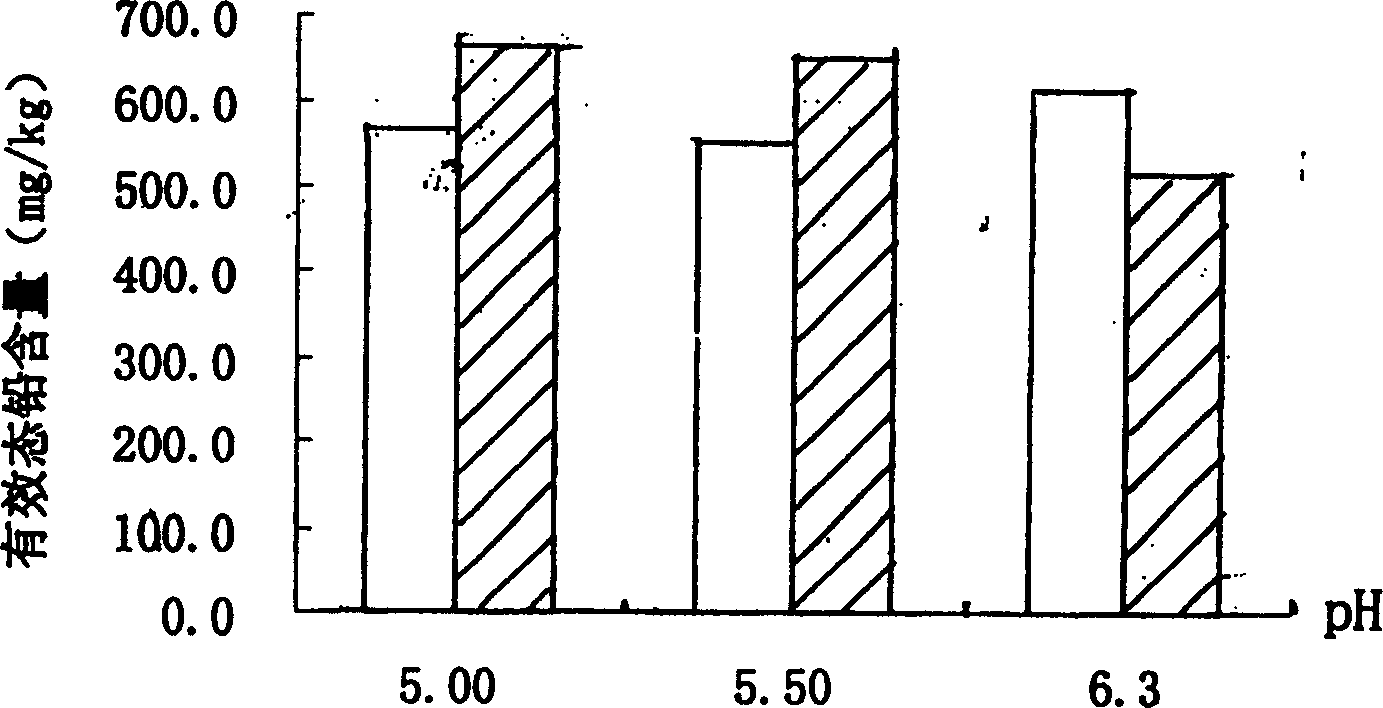Plant restoring method of lead polluted soil
A lead-contaminated soil and phytoremediation technology, applied in the restoration of polluted soil and other directions, can solve the problems of difficult to develop large-scale polluted soil, soil structure damage, soil fertility degradation, etc., to achieve good social benefits, beautify the environment, and conserve water and soil. Effect
- Summary
- Abstract
- Description
- Claims
- Application Information
AI Technical Summary
Problems solved by technology
Method used
Image
Examples
Embodiment 1
[0016] Sedum sedum was transplanted in soil with different levels of lead pollution, nitrogen, phosphorus and potassium fertilizers were applied, and traditional crop management methods were used during the growth period, and the aboveground parts were harvested 4 months after transplanting. It has been determined that at a pollution level of 200mg / kg, the dry matter yield of Sedum sedum is 926kg / ha, the lead content in the aboveground part is 210mg / kg, and the lead taken away from the soil is 194g / ha; at the pollution level of 400mg / kg , the dry matter yield of Sedum sedum was 1148kg / ha, the lead content in the aboveground part was 180mg / kg, and the lead taken away from the soil was 207g / ha; under the pollution level of 800mg / kg, the dry matter yield of Sedum sedum was 981kg / ha ha, the lead content in the aboveground part was 186mg / kg, and the lead taken away from the soil was 182g / ha; at the pollution level of 1600mg / kg, the dry matter yield of Sedum sedum was 878kg / ha, and t...
Embodiment 2
[0018] Transplant Sedum sedum in lead-polluted soil with a lead content of 1469mg / kg. Harvest the aboveground part 4 months after the first transplant, fill the seedlings after harvest, and conduct the second harvest after 3 months. Apply after each harvest Nitrogen, phosphorus and potassium fertilizers and organic fertilizers are managed according to traditional crop management methods during the growth period. It was determined that after the first harvest, the dry matter yield of Sedum sedum was 1277kg / ha, the lead content in the aboveground part was 177mg / kg, and the lead taken away from the soil was 0.23kg / ha. After the second harvest, the yield of Sedum sedum was 3219kg / ha, the lead content in the shoot was 139mg / kg, and the lead taken away from the soil was 0.48kg / ha. After the two harvests, the soil lead content changed from 1469mg / kg to 1403mg / kg, which is equivalent to a 4.49% reduction in the total lead in the soil. Afterwards, harvest once every 3 months or when Se...
Embodiment 3
[0020] Sedum sedum was transplanted in lead-polluted soil with lead content of 6011mg / kg and different pH values, and nitrogen, phosphorus and potassium fertilizers were applied. During the growth period, the traditional crop management methods were used for management, and the above-ground parts were harvested 4 months after transplanting. It has been determined that at the level of 5.0, the dry matter yield of Sedum sedum is 1680kg / ha, the lead content in the aboveground part is 162mg / kg, and the lead taken away from the soil is 272g / ha; at the level of pH 5.5, Sedum sedum The dry matter yield of sedum is 1530kg / ha, the lead content in the aboveground part is 146mg / kg, and the lead taken away from the soil is 223g / ha; at the level of pH 6.3, the dry matter yield of Sedum sedum is 1635kg / ha, and the lead content in the aboveground part is 1635kg / ha. The content is 121mg / kg, and the lead taken away from the soil is 198g / ha. After planting Sedum sedum, the available state (DTPA...
PUM
 Login to View More
Login to View More Abstract
Description
Claims
Application Information
 Login to View More
Login to View More - R&D
- Intellectual Property
- Life Sciences
- Materials
- Tech Scout
- Unparalleled Data Quality
- Higher Quality Content
- 60% Fewer Hallucinations
Browse by: Latest US Patents, China's latest patents, Technical Efficacy Thesaurus, Application Domain, Technology Topic, Popular Technical Reports.
© 2025 PatSnap. All rights reserved.Legal|Privacy policy|Modern Slavery Act Transparency Statement|Sitemap|About US| Contact US: help@patsnap.com

